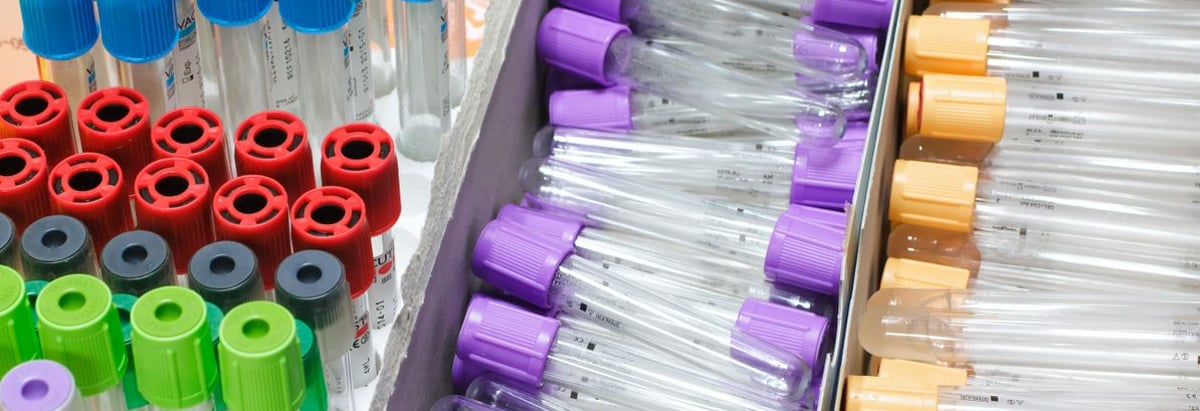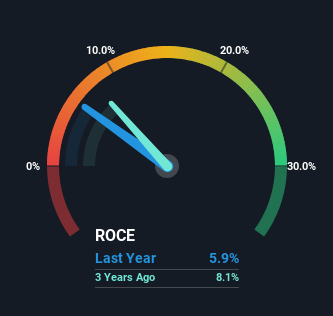- South Korea
- /
- Medical Equipment
- /
- KOSDAQ:A131030
Investors Could Be Concerned With OPTUS Pharmaceutical's (KOSDAQ:131030) Returns On Capital

If you're not sure where to start when looking for the next multi-bagger, there are a few key trends you should keep an eye out for. Typically, we'll want to notice a trend of growing return on capital employed (ROCE) and alongside that, an expanding base of capital employed. This shows us that it's a compounding machine, able to continually reinvest its earnings back into the business and generate higher returns. Having said that, from a first glance at OPTUS Pharmaceutical (KOSDAQ:131030) we aren't jumping out of our chairs at how returns are trending, but let's have a deeper look.
What Is Return On Capital Employed (ROCE)?
Just to clarify if you're unsure, ROCE is a metric for evaluating how much pre-tax income (in percentage terms) a company earns on the capital invested in its business. Analysts use this formula to calculate it for OPTUS Pharmaceutical:
Return on Capital Employed = Earnings Before Interest and Tax (EBIT) ÷ (Total Assets - Current Liabilities)
0.059 = ₩8.3b ÷ (₩152b - ₩13b) (Based on the trailing twelve months to June 2024).
Therefore, OPTUS Pharmaceutical has an ROCE of 5.9%. Ultimately, that's a low return and it under-performs the Medical Equipment industry average of 9.3%.
See our latest analysis for OPTUS Pharmaceutical

While the past is not representative of the future, it can be helpful to know how a company has performed historically, which is why we have this chart above. If you want to delve into the historical earnings , check out these free graphs detailing revenue and cash flow performance of OPTUS Pharmaceutical.
How Are Returns Trending?
When we looked at the ROCE trend at OPTUS Pharmaceutical, we didn't gain much confidence. Around five years ago the returns on capital were 12%, but since then they've fallen to 5.9%. However, given capital employed and revenue have both increased it appears that the business is currently pursuing growth, at the consequence of short term returns. And if the increased capital generates additional returns, the business, and thus shareholders, will benefit in the long run.
The Key Takeaway
Even though returns on capital have fallen in the short term, we find it promising that revenue and capital employed have both increased for OPTUS Pharmaceutical. These growth trends haven't led to growth returns though, since the stock has fallen 23% over the last five years. So we think it'd be worthwhile to look further into this stock given the trends look encouraging.
OPTUS Pharmaceutical does come with some risks though, we found 2 warning signs in our investment analysis, and 1 of those is a bit concerning...
While OPTUS Pharmaceutical may not currently earn the highest returns, we've compiled a list of companies that currently earn more than 25% return on equity. Check out this free list here.
New: AI Stock Screener & Alerts
Our new AI Stock Screener scans the market every day to uncover opportunities.
• Dividend Powerhouses (3%+ Yield)
• Undervalued Small Caps with Insider Buying
• High growth Tech and AI Companies
Or build your own from over 50 metrics.
Have feedback on this article? Concerned about the content? Get in touch with us directly. Alternatively, email editorial-team (at) simplywallst.com.
This article by Simply Wall St is general in nature. We provide commentary based on historical data and analyst forecasts only using an unbiased methodology and our articles are not intended to be financial advice. It does not constitute a recommendation to buy or sell any stock, and does not take account of your objectives, or your financial situation. We aim to bring you long-term focused analysis driven by fundamental data. Note that our analysis may not factor in the latest price-sensitive company announcements or qualitative material. Simply Wall St has no position in any stocks mentioned.
About KOSDAQ:A131030
Flawless balance sheet low.
Market Insights
Community Narratives




